- Title: ‘Strong Songs of the Dead: The Pagan Rites of Sacred Harp’
- Author: Th. Metzger
- Publisher: Underworld Amusements
- Publication Date: 2024
- RRP: $US16.95
- Format: Softcover
- Pages: 228
- ISBN: 979-8-9854370-3-4
- Genre: Nonfiction
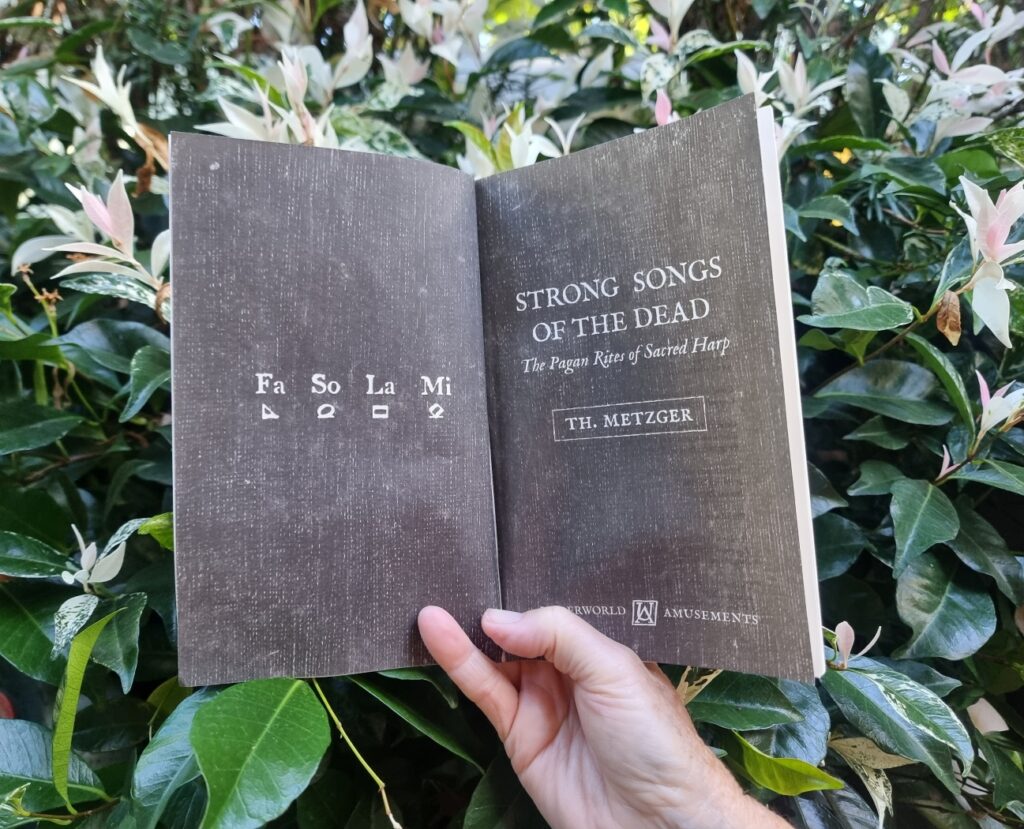
Have you ever heard of Sacred Harp singing? I certainly had not before I read Metzger’s book. And I like a variety of singing myself – Hymns, baroque opera, country, folk; and all sorts of choral music.
But the Sacred Harp; referring to the human voice, a specific singing style, and associated hymn book of the same name first published in 1844 in the American South; had previously eluded me.
Metzger tells us Sacred Harp singing began in the early 1800’s, with a breakaway group of Baptists, called Primitive Baptists, who refused to allow instruments into their meeting houses. However, today Sacred Harp is rarely used in any regular church services; thought it still has a devoted following.
It is sung acapella, in 4 parts – alto, tenor, treble, and bass. The group singing in a ‘hollow square,’ towards the open space in the middle of 4 groups of singers; who are arranged in parts, in lines. With an alternating leader in the space in the middle. Who picks the song, leads the singing for a period, and conducts with an open palm.
In watching performances online, it seems to me that many of the singers also beat along to the song with an open hand.
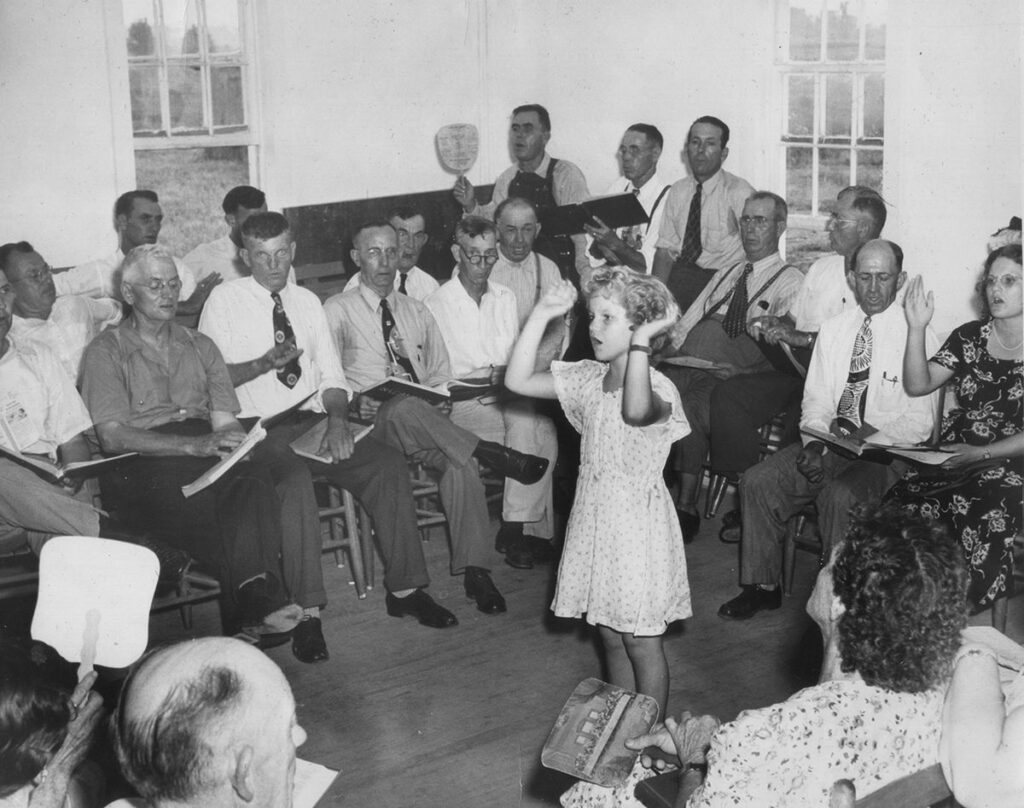

A key component of Sacred Harp lies in its direct, DIY, communal, and spontaneous nature. With the music being sung live, for the benefit of the singers singing it, in that very moment. With no outside audience in mind. Connecting it directly to the long histories of ecstatic gathering, paganism, and the occult.
Sacred Harp singing is also called ‘shape note singing,’ as the musical notes are written as 4 shapes, representing ‘fa’, ‘so’, ‘la’, and ‘me’, with different pitches. This is supposed to make reading music easier for the untrained. Something I think you would have to try in person to really understand.
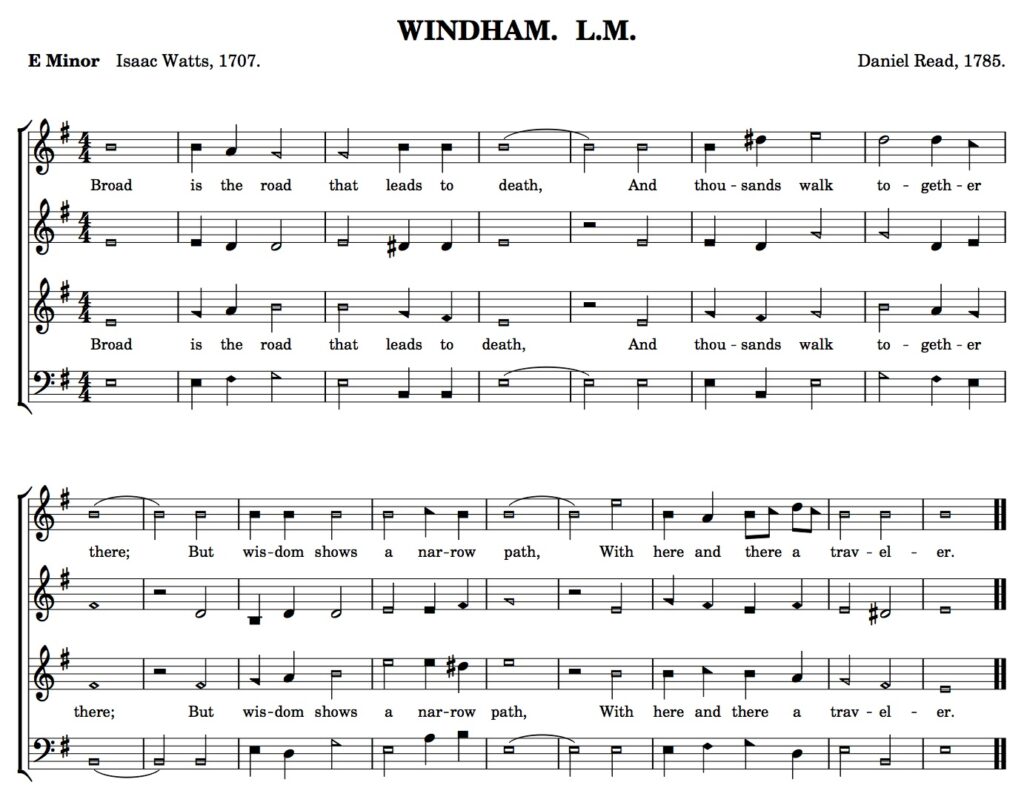
Today, Sacred Harp singing thrives mainly in Southern, rural America – A place of multiplicities.
As Metzger notes in his book,
“I have no desire to glorify or romanticize rural America. What’s out there in the middle of nowhere? A lot of angry, flag waving, off road motor vehicles, dog fighting, and hostility towards scientific learning.
As compensation though you can enjoy some excellent dishes making use of wild game, charming churches, homemade applejack and corn liquor, much open space, tiny and poorly attended graveyards, lots of trees, and great music.”
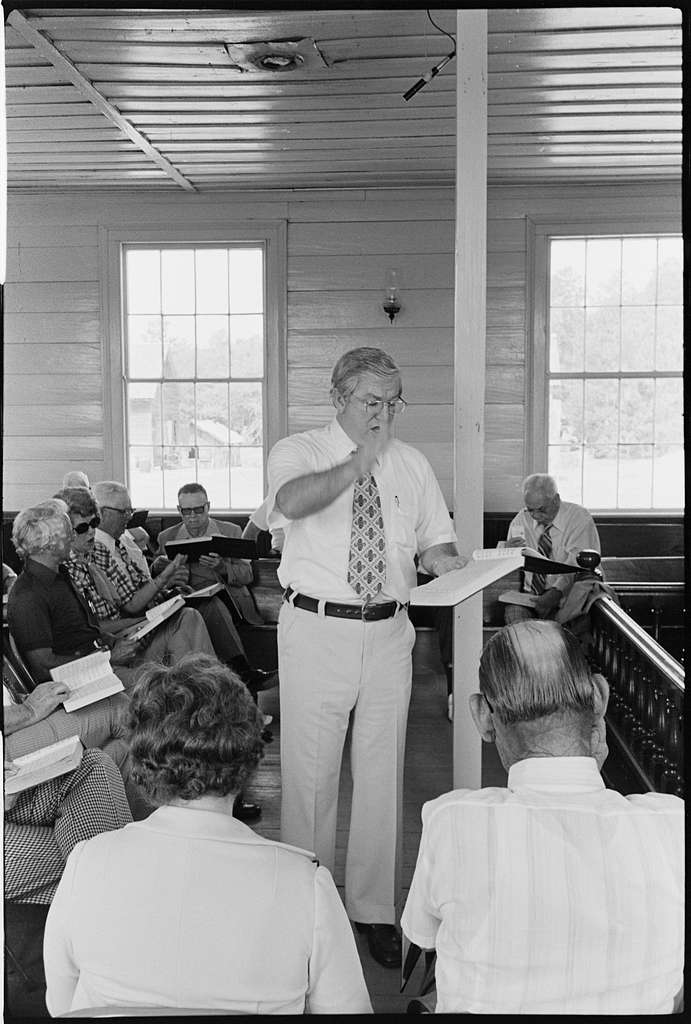
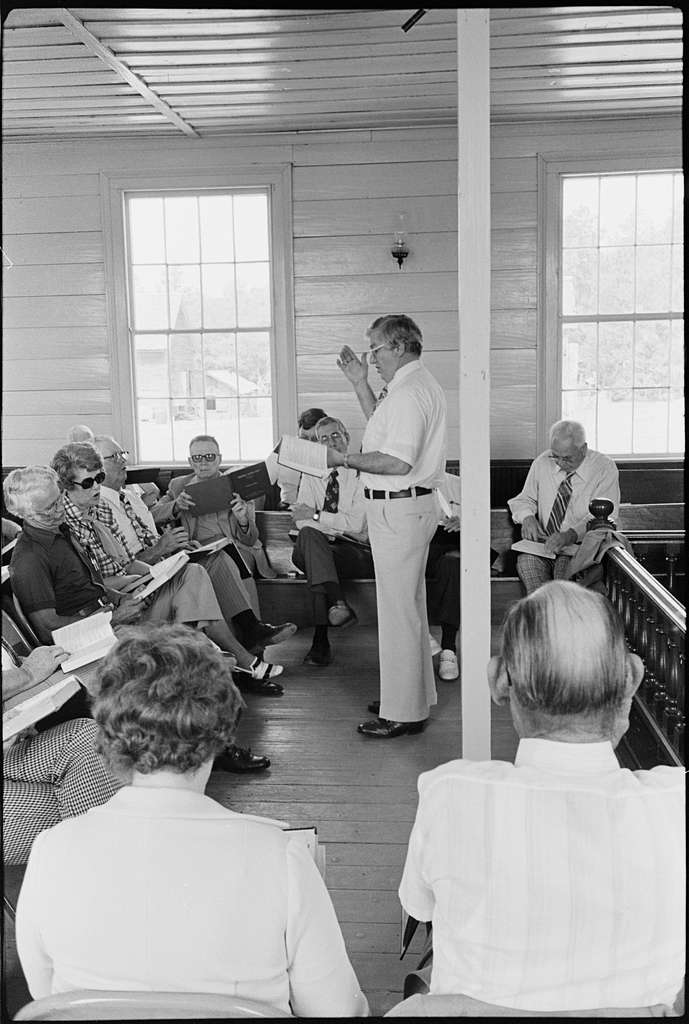
Metzger is a strong devotee of Sacred Harp singing, and ‘Strong Songs of the Dead’ is also an ode to the part it plays in his life. It is not just about Sacred Harp, but the people he meets through it, relationships formed, the food he eats at Sacred Harp meetups aka ‘singups,’ places he goes, and his many musings.
Throughout the book, Metzger attends dozens of singups, usually with his wife, and clearly loves them. He sings in disused churches, graveyard, caves, and old buildings. There are songs about death, sin, the vileness of man, and the wonderfulness of going to Heaven.
For example, some lyrics from a Sacred Harp hymn called ‘Doomsday’:
“The living look with dread, The frighted dead arise,
Start from the monumental bed, And lift their ghastly eyes.”
In one particularly grisly chapter, Metzger goes to an Easter singup at a place called Suicide Corners, where there have been many road accidents. Connecting this to fabled country musician Hank Williams. With Metzger suggesting how Williams was actually the Messiah of Alabama, or how the,
“Messiah would be if he looked and sounded like if he’d been born hardscrabble poor in 1923…
Or if Jesus had been a full-blown alcoholic by age 14 and died drunk in the back of a behemoth Cadillac instead of on the cross.”
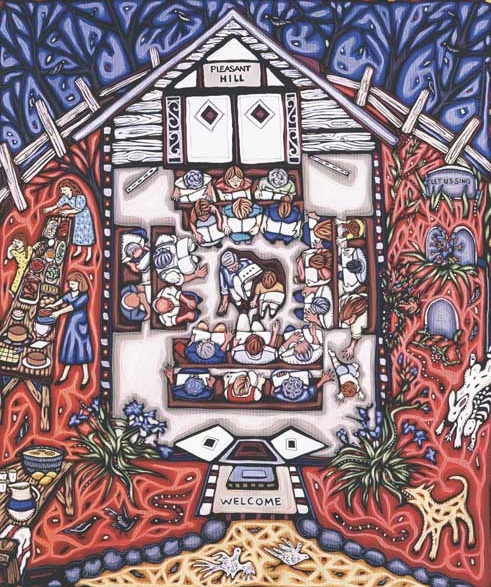
There are also lyrical descriptions of scenes that illustrate what Sacred Harp singing means both personally and philosophically to Metzger. For example, he describes himself and his wife visiting a bereaved family of fellow Sacred Harp singers, singing to them, and the family of six children and their parents singing back to them.
With Metzger noting,
“After years in the hollow square, I didn’t doubt what I felt… The dead are still alive, in an interzone beyond time and space.
Music dissolves the line that separates us from those who have come before.”
Metzger is an engaging and eccentric author. He has certainly made me keen to try Sacred Harp singing.
Amazingly, there are even Sacred Harp groups in Australia where I live. Try one near you; but do not forget to read up on it first via Metzger’s highly enjoyable tome!
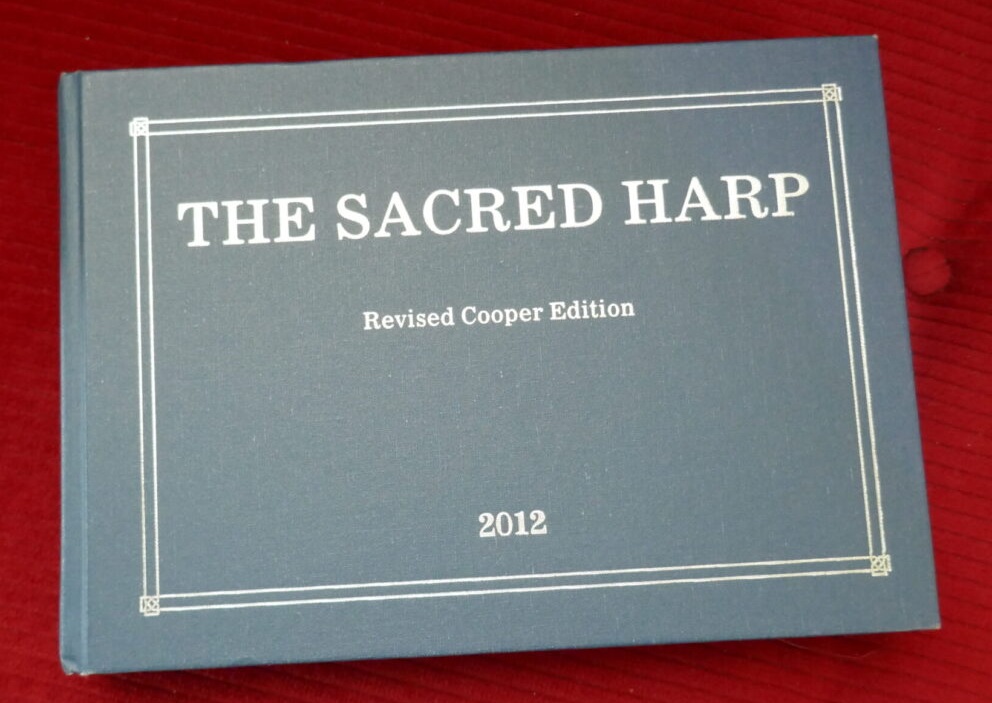
Links
- ‘Strong Songs of the Dead’ – Book Website
- ‘Strong Songs of the Dead’ – Buy the Hardback Edition via Hollow Square Books
- ‘Strong Songs of the Dead’ – Buy the Softcover Edition via Underworld Amusements
- Th. Metzger – Website
- Th. Metzger – 2024 Interview via The Aither
- Th. Metzger – GoodReads entry
- ‘The Sacred Harp’ book – Link to Read a 1909, 5th Edition, via Original Sacred Harp
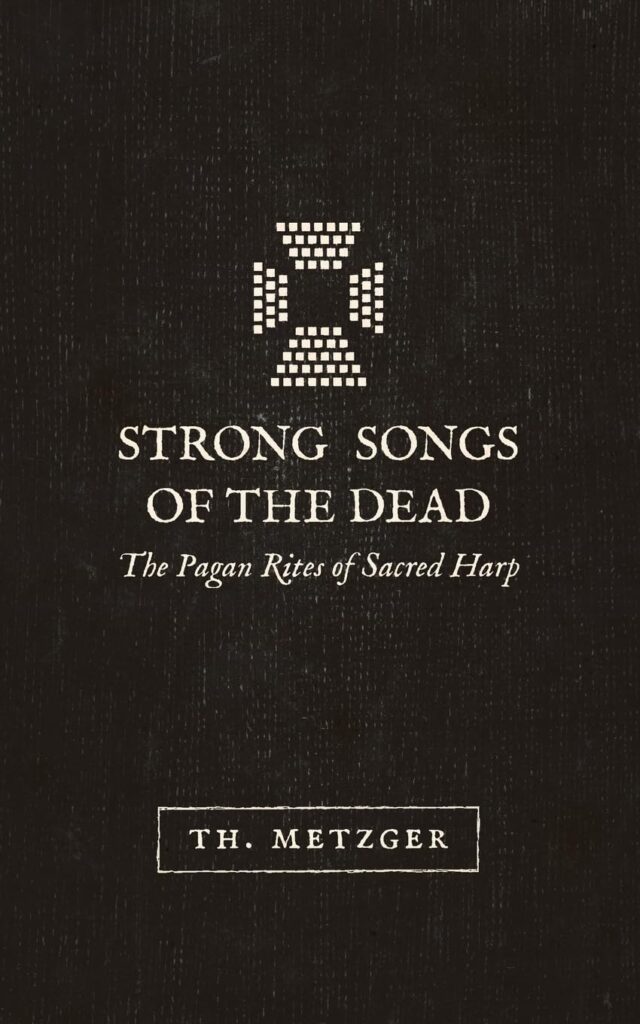
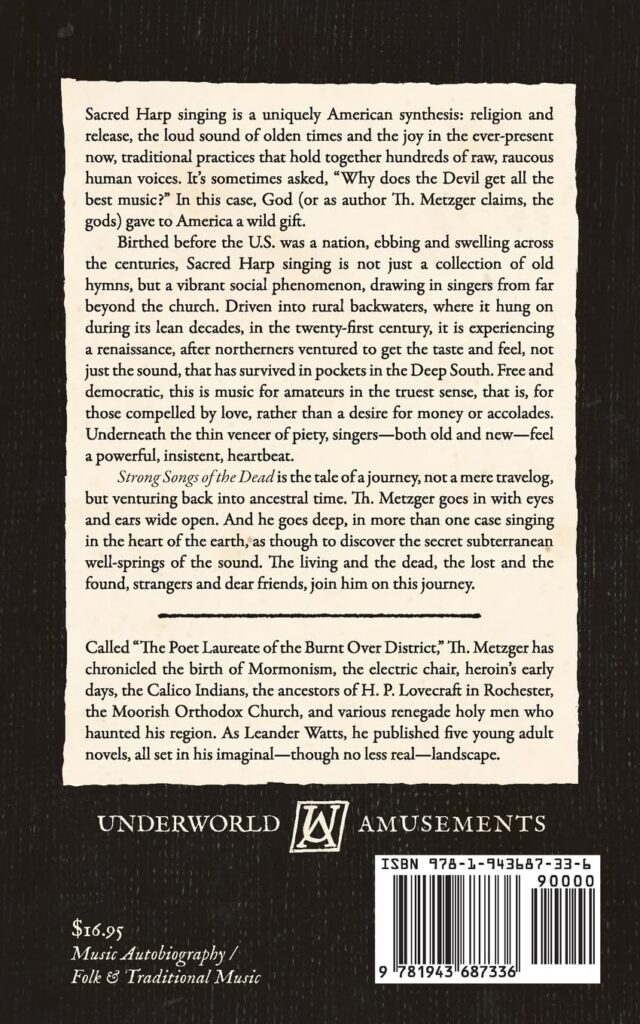
All images supplied by Underworld Amusements and Amanda, or sourced online.
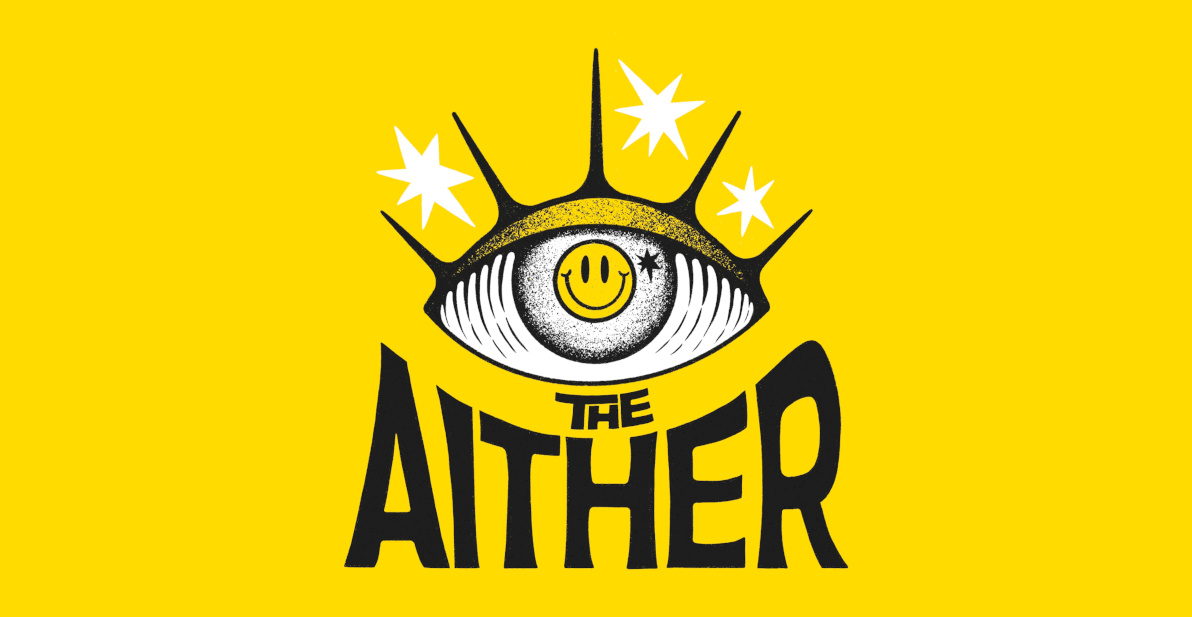
![Book Review – ‘Strong Songs of the Dead: The Pagan Rites of Sacred Harp’ by Th. Metzger [Underworld Amusements, 2024]](https://theaither.com/wp-content/uploads/2024/12/20241223_172612-sml.jpg)
![Comic Book Review – ‘Uno’ aka ‘One’ by David Marchetti [Hollow Press, 2021]](https://theaither.com/wp-content/uploads/2022/06/UNO-by-David-Marchetti-Cover-002-med-jpg-347x264.webp)

![Comic Review – ‘Horaman No. 1’ from writer Shayne Armstrong and artist Glenn Manders [Black Bar Comics X Bad Teeth Comics, 2020]](https://theaither.com/wp-content/uploads/2020/04/Horaman-1-Photo-of-Comic-Cover-Med.-jpg-264x264.webp)
